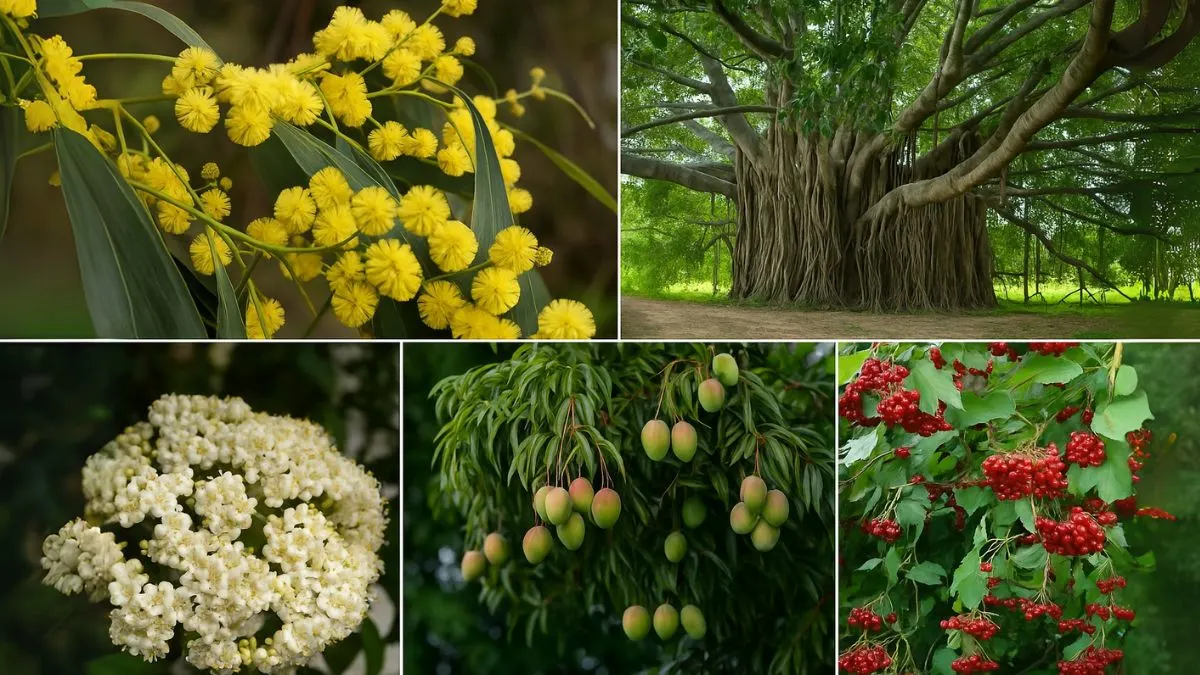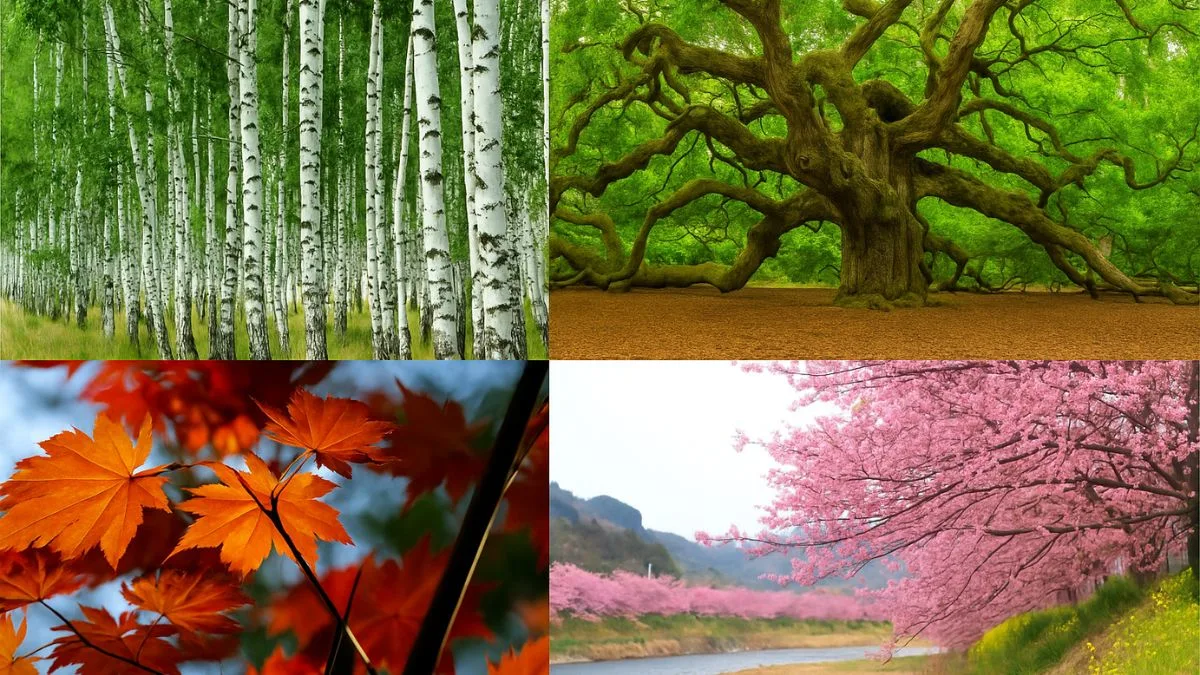Every country has symbols that represent its identity, values, and culture. Just as national flags and anthems carry meaning, so do national trees. They are not just plants but living symbols that hold historical, cultural, and ecological significance.
From the Golden Wattle of Australia to the Oak of Germany, national trees often reflect the strength and character of the people. In this article, we’ll explore nine fascinating national trees from around the world, why they were chosen, and the stories they tell.
1. Australia – Golden Wattle (Acacia pycnantha)

The Golden Wattle is a beloved symbol of Australia. Known for its bright yellow flowers, it represents unity, resilience, and celebration. Australians even celebrate Wattle Day on September 1st, marking the arrival of spring.
Whenever the Golden Wattle blooms, it paints the landscapes in gold, reminding citizens of endurance through harsh climates. It is often used in Australian emblems and cultural references.
2. India – The Banyan Tree (Ficus benghalensis)
The Banyan Tree of India is deeply rooted in Indian mythology and traditions. With its expansive branches and aerial roots, it symbolizes immortality, strength, and shelter.
Villages across India often have a large banyan tree at their center, serving as a meeting place for communities. It’s also sacred in Hinduism, representing eternal life.
3. Bangladesh – Mango Tree (Mangifera indica)
For Bangladesh, the Mango Tree is a cultural treasure. The Mango Tree (Mangifera indica) is not only loved for its delicious fruit but also for its representation of prosperity and abundance.
Mangoes are considered the “king of fruits” in South Asia. During summer, mango season becomes a celebration across the country, reflecting the bond between people and nature.
Also Read: 9 Mosses That Will Make Your Garden Look Like a Zen Paradise
4. Ukraine – Viburnum and Willow
Ukraine is unique because it has two important symbolic trees: the Viburnum and the Willow.
- The Viburnum symbolises beauty, love, and resilience. It frequently appears in Ukrainian folk songs and embroidery.
- The Willow, with its drooping branches, represents sorrow and memory, often connected with Ukraine’s history of struggles and survival.
Together, they embody the dual nature of the Ukrainian spirit—strength in hardship and beauty in tradition.
5. Finland – Silver Birch (Betula pendula)
The Silver Birch is the national tree of Finland. With its white bark and elegant form, it thrives in northern climates and symbolizes purity, renewal, and resilience.
Finns use birch wood in crafts, furniture, and even sauna rituals. Walking through birch forests in Finland feels like stepping into a fairytale, where nature and culture blend seamlessly.

6. Germany – Oak Tree
The Oak is Germany’s national tree and a symbol of strength, stability, and endurance. Historically, oak trees were sacred to Germanic tribes, and they continue to represent national pride and unity.
The Oak also appears in German coins, emblems, and literature. It is a reminder of how deeply nature is tied to heritage.
7. USA – Oak Tree (Shared with Germany)
Interestingly, the Oak is also considered a symbol in the USA, often associated with endurance and independence. The white oak in particular is cherished for its strong wood, which was historically used in shipbuilding.
8. Canada – Maple Tree
While not in your original keyword list, no global list would be complete without Canada’s Maple Tree. Its red leaves appear on the national flag, symbolizing unity and peace. Maple syrup is a beloved Canadian tradition, connecting culture with cuisine.
Also Read: Grow a Lotus Plant at Home and Watch Peace Bloom Daily
9. Japan – Cherry Blossom (Sakura)
Japan’s Cherry Blossom represents beauty, renewal, and the fleeting nature of life. Each spring, people gather under blooming sakura trees to celebrate Hanami festivals.
Though delicate, cherry blossoms reflect Japan’s cultural emphasis on appreciating beauty in transience.
Quick Table: National Trees
Country |
National Tree |
Symbolism |
Australia |
Golden Wattle (Acacia pycnantha) |
Unity, resilience, celebration |
India |
Banyan Tree (Ficus benghalensis) |
Immortality, shelter, strength |
Bangladesh |
Mango Tree (Mangifera indica) |
Prosperity, abundance |
Ukraine |
Viburnum, Willow |
Beauty, resilience, sorrow |
Finland |
Silver Birch (Betula pendula) |
Purity, renewal, resilience |
Germany |
Oak |
Strength, stability, pride |
USA |
Oak (White Oak) |
Independence, endurance |
Canada |
Maple Tree |
Unity, peace, cultural pride |
Japan |
Cherry Blossom (Sakura) |
Beauty, renewal, transience |
National trees are more than just plants; they are living monuments of heritage and pride. From the Golden Wattle of Australia to the Banyan Tree of India and the Mango Tree of Bangladesh, each tells a unique story. Countries like Ukraine with Viburnum and Willow, or Finland’s Silver Birch, show how deeply culture and ecology are intertwined.
Next time you see these trees in Canada, the USA, or anywhere else in the world, take a moment to appreciate not just their beauty but the cultural history they carry.






